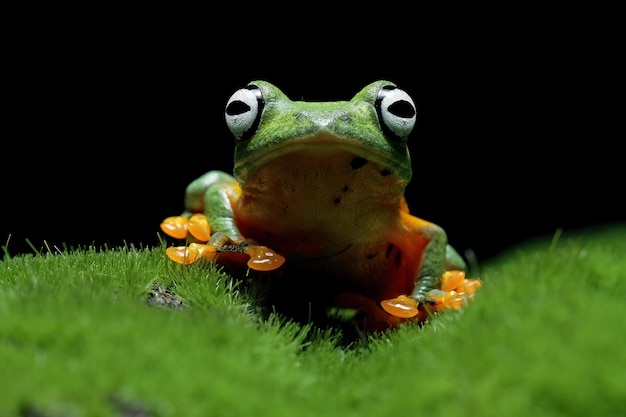Poison Dart Frog Facts

Poison dart frogs are known for their bright and vibrant colors.
Some species of poison dart frogs can be as small as a paperclip.
The colors of poison dart frogs serve as a warning to predators.
These frogs get their name from native tribes using their toxic secretions on blow darts for hunting.
The golden poison dart frog is the most poisonous frog in the world.
Poison dart frogs are found in Central and South America.
The diet of poison dart frogs mainly consists of ants, termites, and small insects.
The poison produced by these frogs comes from their diet of ants and other small invertebrates.
The bright colors of poison dart frogs can vary depending on their environment, diet, and species.
Some poison dart frogs have different patterns to mimic the appearance of toxic species to fool predators.
Despite their toxic nature, poison dart frogs have a few predators like some snakes and birds.
When raised in captivity, poison dart frogs lose their toxicity due to changes in their diet.
Each species of poison dart frogs has its own unique toxin composition.
The toxicity of poison dart frogs can vary from mild to potentially lethal.
Poison dart frogs are an indicator species, meaning their population indicates the overall health of their ecosystem.
These frogs are excellent climbers and can often be found in trees and bushes.
Some poison dart frogs lay their eggs on leaves, and when they hatch, the tadpoles fall into water below.
Poison Dart Frog Facts part 2
Poison dart frogs have a call unique to their species, which they use to communicate with other frogs.
The skin of poison dart frogs is very delicate and can absorb water, oxygen, and other substances.
Some indigenous tribes use the toxic secretions of poison dart frogs to coat the tips of their arrows for hunting purposes.
The bright colors of poison dart frogs can also be a form of camouflage in their natural habitat.
These frogs are diurnal, meaning they are most active during the day.
Poison dart frogs have long sticky tongues that they use to catch their prey.
The lifespan of poison dart frogs can vary depending on the species, but most live for 3-15 years in the wild.
The brighter the colors of a poison dart frog, the more toxic it is likely to be.
Poison dart frogs communicate through a combination of vocalizations and physical displays.
The skin of poison dart frogs secretes a toxic alkaloid that can cause paralysis or death to predators.
The toxicity of poison dart frogs serves as a form of self-defense against predators.
These frogs have very limited interactions with humans due to their small size and elusive nature.
Poison dart frogs are known for their elaborate courtship rituals, which often involve vocalizations and displays of strength.
Some species of poison dart frogs are highly territorial and will defend their territory aggressively.
The reproductive cycle of poison dart frogs involves the male attracting a female with vocalizations and then engaging in amplexus.
The mating pairs of poison dart frogs are often monogamous and stay together for multiple breeding seasons.
Poison dart frogs are often found in humid and tropical rainforests.
These frogs are known for their high-pitched and musical vocalizations.
Some species of poison dart frogs demonstrate parental care, with the male guarding the eggs until they hatch.
The bright colors of poison dart frogs can fade in captivity due to differences in lighting and diet.
Poison dart frogs have specialized skin cells that produce their toxic secretions.
These frogs are ectothermic, meaning their body temperature is regulated by their environment.
The diet of poison dart frogs plays a crucial role in the toxicity of their secretions.
The skin of poison dart frogs can contain hundreds of different types of toxic compounds.
Despite their tiny size, poison dart frogs are adept at leaping long distances.
Some species of poison dart frogs are highly endangered due to habitat loss and illegal trade.
The bright colors of poison dart frogs also serve as a warning sign for potential predators.
The study of poison dart frogs is vital for understanding the intricate relationship between predators, prey, and their environment.

